 | E-mail to Birds Korea |
 | KWBS |
in the Region
 | The Oriental Bird Club |
 | BirdLife International (Asia) |
June
Often hot (temperatures up to 30°C or more inland) and humid, with very heavy rains some years by mid-month.
By early June, Yellow and the now-rare von Schrenck’s Bittern are breeding in the least disturbed reed-beds, and Watercock give their (slightly comical) gulping calls in a few rice-field areas. Nesting activity in Black-faced Spoonbill and Chinese Egret colonies peaks, and forest nesters are still vocal, especially in the first half of the month. In mature forest close to Seoul, typical species include five species of woodpecker, Ruddy Kingfisher, Yellow-rumped Flycatcher and Mandarin Duck, while towards the south Pale Thrush and Black Paradise Flycatcher can be found at some sites. Away from the mainland, Black Woodpigeon and Styan’s Grasshopper Warbler breed on offshore islands, even sharing a few more remote sites with breeding Swinhoe’s Storm Petrel and Streaked Shearwater.
Although not usually considered an important month for migration, June has nevertheless provided several national firsts in recent years, including Lesser Coucal (2005), Malayan Night Heron (2006), Roseate Tern (2008) and Ashy Woodswallow (2009).
Jungnang Rivulet, June 29
As I suspected, it was worth checking this tributary of the Han river, and there was an exceptional array of rarely - oversummering ducks. I took record shots of all but include here only the better pictures as conditions very poor. Walking from Oksu to Eungbong I counted the following:
- Mandarin Duck Aix galericulata. 50+ non breeders, apparently made up of drakes, is a significant midsummer concentration.
- Gadwall Anas strepera. One male. There are only one or two (?) previous summer records.
- Mallard Anas platyrhynchos. 68 (51 adults plus a further 17 chicks) must surely be the highest summer concentration thus far recorded in Korea. This number included two families- one mother with a set of 11 ducklings, and another with six, which are rare breeding records.
- Northern Pintail Anas acuta. A pair. There are less than ten previous summer records.
- Baikal Teal Anas formosa. A drake, thankfully still in breeding plumage. This is perhaps only the third or fourth (?) summer record for Korea.
- Eurasian Teal Anas crecca. Two males and a female. There are, once again, less than ten previous summer records.
- Common Pochard Aythya ferina. Five (four males and a female). A very rare summer record and probably the highest number yet recorded in summer.
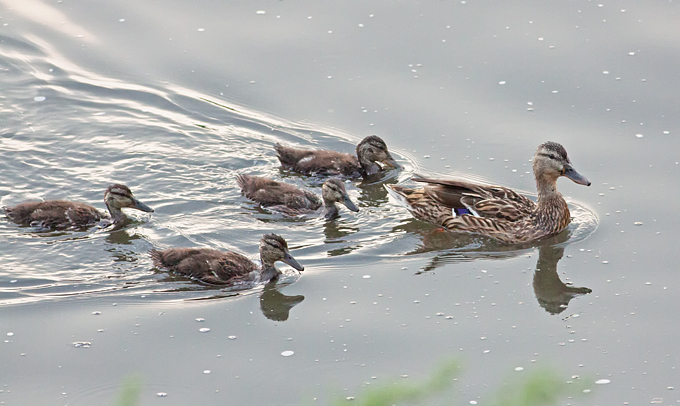
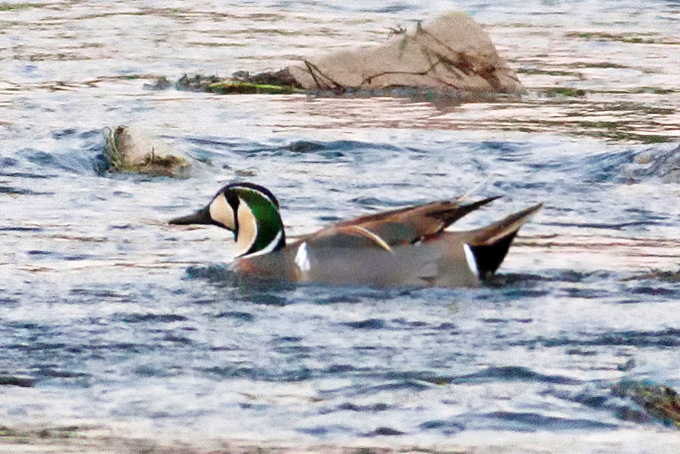
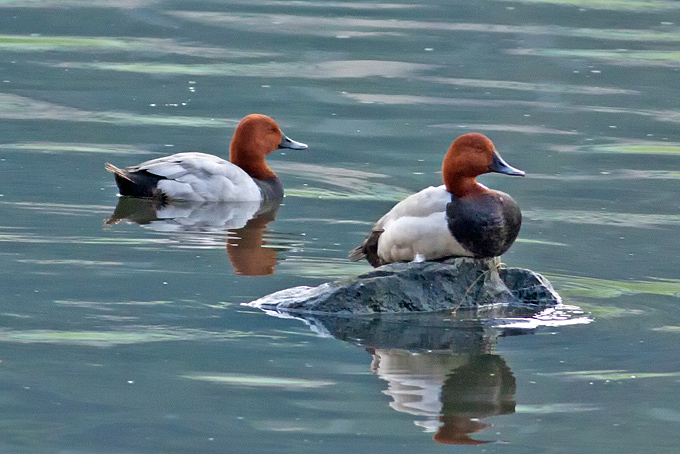
Hwapo Wetland, June 21 - 22
On both Saturday and Sunday, I spent a few hours at Hwapo. On Saturday, there was a light rain throughout the afternoon but it was light enough to enjoy a nice and quiet walk around the wetland. In the surrounding rice fields there were Grey Heron, Eastern Great Egret, Little Egret, and Cattle Egret along with a few Spot-billed Duck and Mandarin Duck. At the wetland, Black-naped Oriole were giving their usual cat-like calls, dipping back and forth through the leafy trees. A pair of Brown-eared Bulbul were busy feeding their young. On occasion, Common Cuckoo (3) were singing from both the hillside and the reeds, with one observed singing from a wire on Sunday. Oriental Dollarbird (3) were zipping around hawking insects late into the afternoon, occasionally breaking on a perch. The highlight of both days were the Yellow-rumped Flycatchers, with at least three pairs observed. On Saturday, as the rain drizzled down, I first heard and then found three juveniles at the same tree feeding, with an adult male watching over. Walking along the trail, I caught a glimpse of a female Yellow-rumped exiting a nest box. I had always wondered if the nest boxes around the park were ever used and if so, by what species. Yellow-rumped Flycatchers were singing on both days, and on Sunday I watched a male jet by in pursuit of a Grey-headed Woodpecker. I'm not sure what the Woodpecker had done, but he seemed to be in hot water. Other species seen include Eastern Great Tit, Daurian Redstart, Japanese Pygmy Woodpecker, Large-billed Crow, Barn Swallow, Common Kestrel, Bull-headed Shrike, Oriental Turtle Dove, a large number of Eurasian Tree Sparrow (120+), Vinous-throated Parrotbill, and Oriental Reed Warbler. Unfortunately, I was unable to find the Oriental Stork that was reported at the wetland a week before.











Northeast Sites, June 19
The need to change trains at Maseok was serendipitous: a Ruddy Kingfisher first heard then seen (!) from the subway platform when it flew across the green village valley.
At the Eastern Tawny Owl site, the 3 youngsters (hard not to call them the 3 Mouseketeers) showed well, if in very dim, shady, early morning light. They seem to be flourishing: staying close together but one or the other sometimes venturing a little away to explore. All three fly now, with varying confidence.
Also in the area: 4 Yellow-rumped Flycatchers, 2 Oriental Dollarbirds, an Eastern Crowned Warbler (heard only), various Black-naped Orioles, Pygmy and Great Spotted Woodpeckers, a Spot-billed Duck with young, a Striated Heron, 2 Grey Herons,, a Eurasian Hobby, a White Wagtail (heard), some Vinous-throated Parrotbills, calling Common and Indian Cuckoos, and several Eurasian Nuthatches. A resident (non-native) Peacock gave spectacular visual and vocal displays. Chipmunks everywhere, and Red Squirrels, watched intently by the owls.
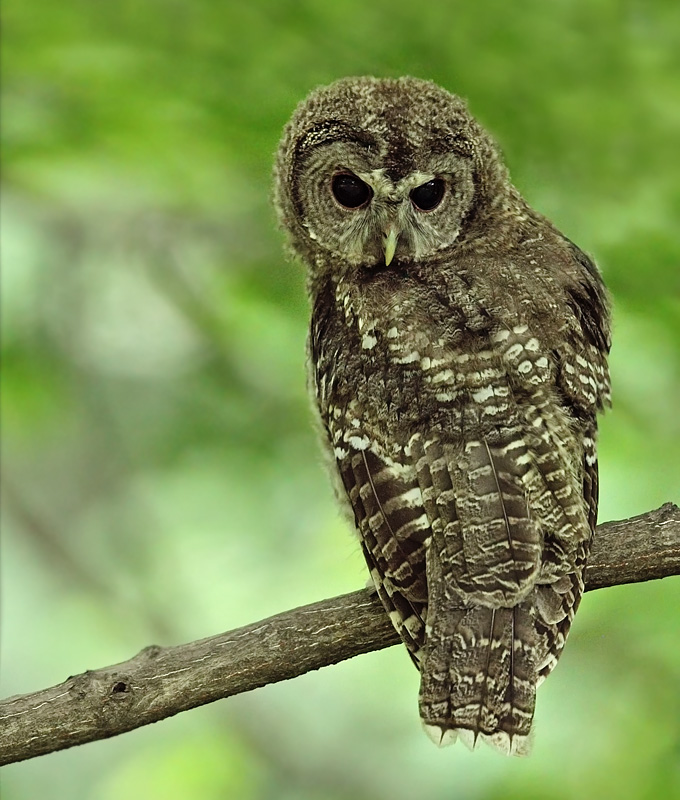
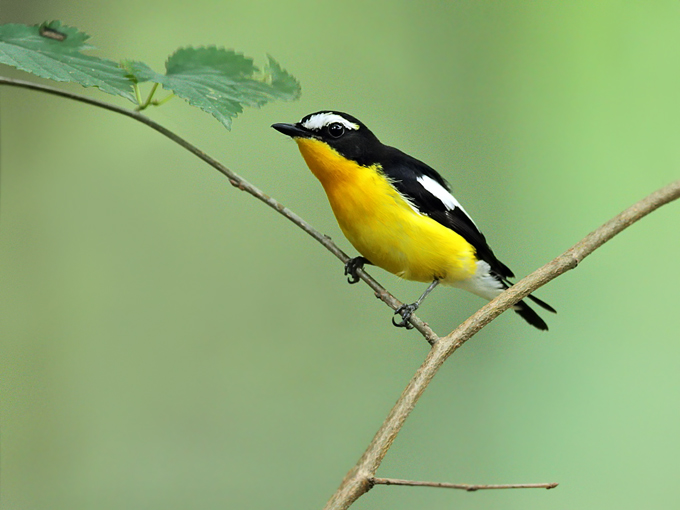
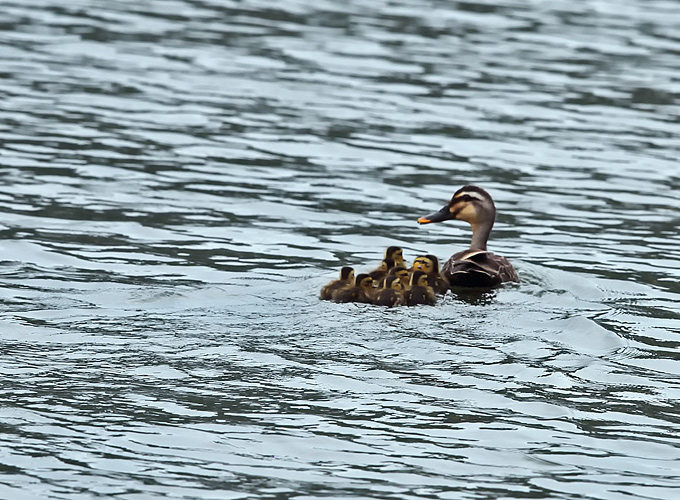
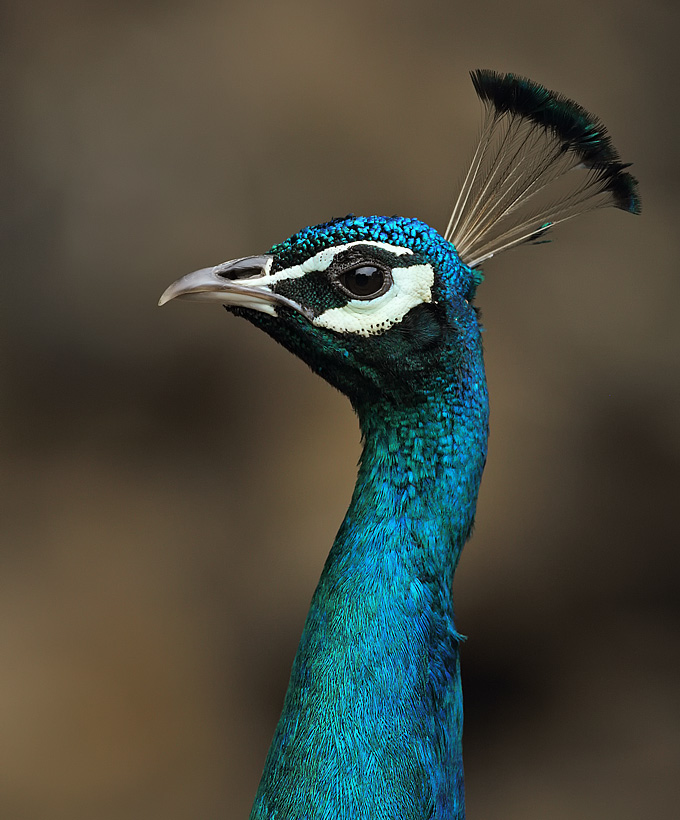
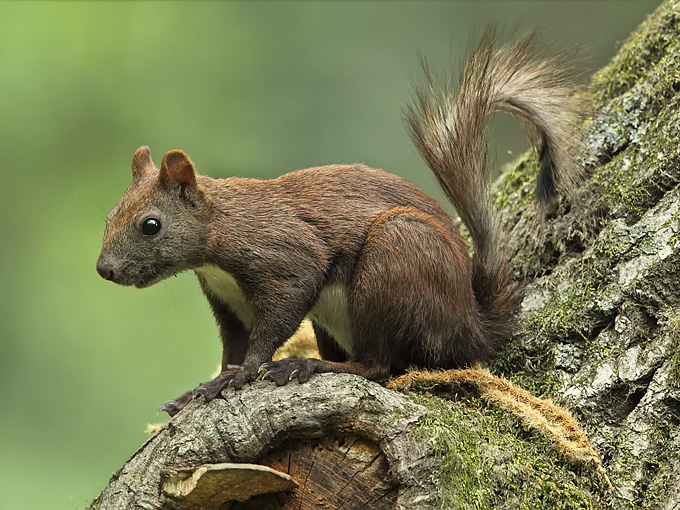
Sorae Marsh Ecological Park, Incheon, June 1 - 17
During the period of the 1st to the 17th of June 2014 I visited the Sorae Marsh Ecological Park in Incheon almost daily for birdwatching and photography. I had easy access to the park as my wife's parents conveniently live a two minute walk from the East Gate. The park contains a mixture of salt marsh, mudflats, fresh and brackish wetlands providing habitat for a variety of bird species. The main walking/cycling track around the edge of the park is raised above the surrounding mudflats and tidal water enters through a gate on the eastern side. The main track is busy with people at times but the well made tracks through the park exclude bicycles and have minimal foot-traffic. Raised boardwalks provide access across the brackish lagoons and there are plenty of small shelters with seats to have a break. Unfortunately the bird hides are mostly poorly positioned. The Observation Deck within the freshwater wetland sits too low to be of any benefit for birdwatching. Toilets are located at the large three storey visitor centre in the south-western corner of the park. The view from the top deck provides a good outlook over the park and surrounding areas.
Constantly calling Oriental Reed Warbler were common within dense reeds and it was in these areas that Yellow Bittern were also quite common. When a bittern entered into the territory of a reed warbler they were more often than not aggressively chased away by the smaller bird. While trying to photograph Yellow Bittern in flight on the 3rd I inadvertently photographed a male Von Schrenck's Bittern. I was to see this species a few more times during my visits including a male on the 9th calling out in the open along a track on the northern side. Common Moorhen were also heard and sometimes seen crossing the tracks in this habitat. A single male Watercock in breeding plumage was a flyover on the 17th.
Migratory shorebirds were not abundant but I did see Common Redshank most days including pairs exhibiting nesting behaviour in various locations. On one occasion a bird landed on a sign 2m in front of me constantly calling. I saw Common Greenshank a few times along with single Common Sandpiper and Far Eastern Curlew on the 13th.
Zitting Cisticola and Vinous-throated Parrotbill were common in the grassland areas and it was here that I regularly heard and sometimes saw Ring-necked Pheasant. Trees are mostly absent in the park but a small patch on the eastern edge almost always had a Common Cuckoo present with up to four chasing each other around and calling in flight on the 14th.
Black-tailed Gull were ever present in the skies above the park with one showing aggression towards a little dog off the leash. A small group of Little Tern made an appearance on the 2nd feeding over the lagoons in the rain.
Great Egret and Grey Heron were commonly seen hunting around the edges of the lagoons and tidal gate along with Little Egret, Black-crowned Night Heron and the occasional Striated Heron. Black-faced Spoonbill were also seen feeding in these areas a few times with a maximum number of five birds seen together including two dependent young on the 15th. Eastern Spot-billed Duck and Great Cormorant were common on the water with a pair of Little Grebe and a single eclipse male Mandarin Duck on the 10th.
Common Kestrel was the most abundant of the raptors over the park with a Eurasian Hobby making an appearance on most days (I was pleased to get a decent photo of one moving at speed, low over the marsh). Chinese Sparrowhawk was seen on three occasions with one being driven off by a hobby on the 5th.
Other wildlife of interest seen in the park included Siberian Weasel which were easily attracted into view using pishing. I saw them more than once chasing Vinous-throated Parrotbill through the reeds. More disturbing was the discovery of a dead Finless Porpoise washed up by the tide which had severe injuries consistent with being cut by a sharp blade.










Busan, June 14
Some leisurely-paced birding in Busan from 5AM to ~5PM covered a range of habitats (forest, tidal-flats and freshwater wetland) and produced several excellent records. Nothing as rare as e.g. Asian Koel was found (even though a female was apparently taken into care earlier this month in Busan after being attacked by a cat: making it a record-breaking three Koels found in the ROK at the start of the month).
However, a large black shape in the canopy shortly after dawn revealed itself to be a Black Woodpigeon - an exceptional mainland record, especially in June. At the same site, we also found White-backed Woodpecker, Northern Boobook, both Pale and Grey-backed Thrushes, three singing Black Paradise Flycatcher (at least two of which seemed to be paired up), single singing Common Cuckoo, Eastern Crowned Warbler (first young fledglings of which were found here 10+ days before) and Blue-and-white Flycatcher, as well as several family parties of Eastern Great and Long-tailed Tits (with all juveniles seen having dark lores) and Grey-headed Woodpeckers.
At the Nakdong Estuary, further species of note included a brief song-phrase given by a distantly singing Styan’s Grasshopper Warbler (heard by NM only), a Chinese Egret, four spoonbills (of which at last two and probably all four were Black-faced Spoonbill), Black Kite and a Western Osprey – a species with very few summer- month records in the ROK.
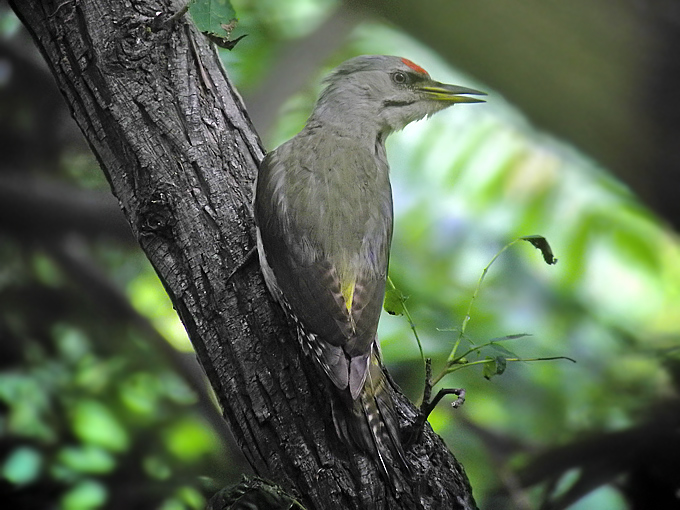
Songdo Lagoon, June 14
Birds of most interest today at the reservoir included:
- Mallard Anas platyrhynchos. Nine drakes is a very high summer concentration.
- Eurasian Teal Anas crecca. One male. There appears to be very few previous midsummer (ie mid June to mid-July) records.
- Black-faced Spoonbill Platalea minor. Some 22 fledglings have already emerged. I also counted at least 21 nests and 107 adults. One of the adults had very extensive yellow marking on the cere.
- Grey Heron Ardea cinerea. One photographed.
- Mongolian Gull Larus mongolicus. Within view, 63 adults, three second calendar-year birds, 23 chicks and fledglings (at various stages of development), and five nests with sitting adults.
- Common Cuckoo Cuculus canorus. One still singing, close by.
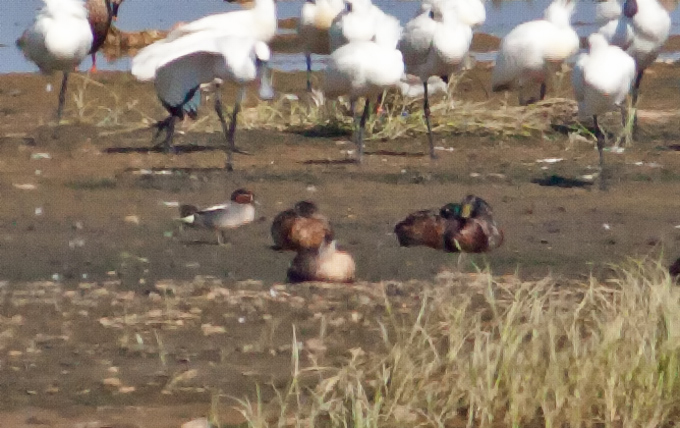
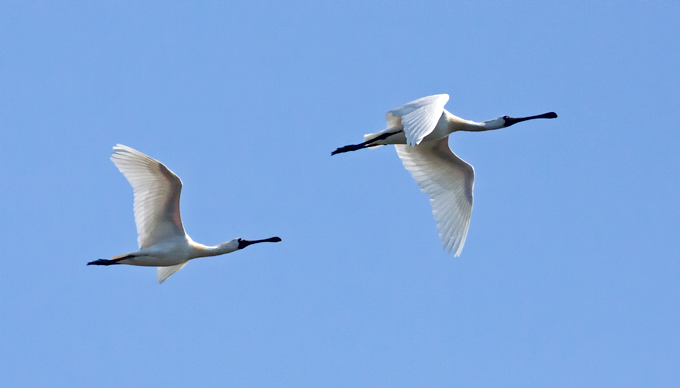
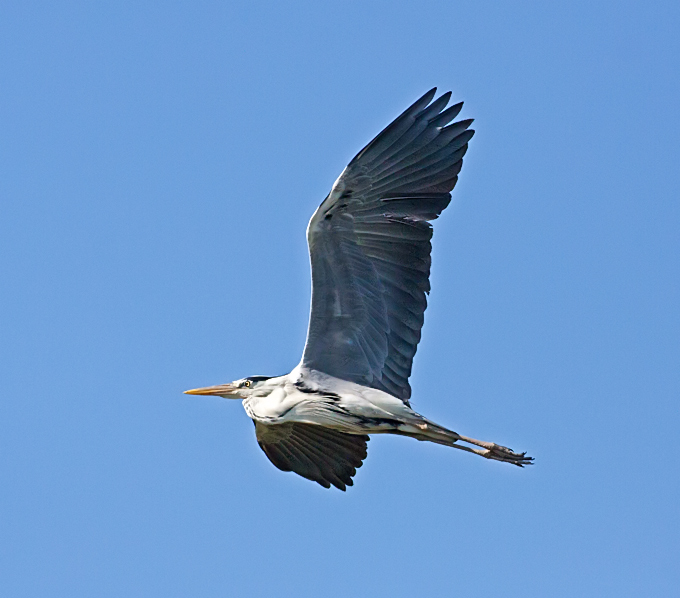
Various Locations, June 4 - 9
A quick birding trip to a few top sites (Yeongjong Island on 4th; Baekryeong Island from 4th PM to 6th; Seosan and Hwaum Temple on 7th; Goseong County on 8th; and several stops in Hwacheon County and Imjingak on 9th) led to a grand total of at least 146 bird species logged. Although a few species were heard only (especially by NM), there were also quite a few well-seen species of note, including several unseasonally late migrants and over-summering species, a few notable breeders, and a couple of outstanding end-of-spring highlights (most especially a Lesser Coucal on the 6th).
Although a highly enjoyable trip (with many great birds, some still-beautiful landscapes, and time in the field shared with Dr. Shim Kyu-Sik and Mr. Lee Yong-Sang on 4th to 6th and with Mr. Mike Friel on the 8th), there was nonetheless daily evidence that the present development model remains ecologically unsustainable. In only six days, we witnessed and photographed bird-shooting near the international airport at Yeongjong (and the killing of a cormorant and apparently of a globally Vulnerable Chinese Egret); ongoing reclamation on the north side of Yeongjong; road and bridge building at Seosan (including close to the Von Schrenck’s site); more road construction materials set-ready in the Hwadong Wetland on Baekryeong (despite multiple formal objections already to this unnecessary road); and the clearing of vegetation and cutting of trees around a patch of woodland in Hwacheon County (Gangwon Province), an area which is supposed to be specially-protected for breeding birds (requiring Birds Korea to send yet another letter of concern to a local government body).
The fifty most notable bird species during the trip were:
- Greater White-fronted Goose Anser albifrons. Three at Seosan on the 7th.
- Common Shelduck Tadorna tadorna. Two in the Hwadong Wetland, Baekryeong, on the 6th. The species is listed as W2 in the 2014 Birds Korea Checklist (suggesting there are no records in the summer months). However, one was seen at Seosan on June 24th 2005 and three were seen in Saemangeum in early August 2013, suggesting occasional oversummering.
- Gadwall Anas strepera. A male and a female were at Seosan on the 7th. The 2014 Birds Korea Checklist lists this species as W3 (i.e. as unrecorded in summer).
- Falcated Duck Anas falcata. NT. One was at Seosan on the 7th.
- Eurasian Wigeon Anas penelope. Six were at Seosan on the 7th: an exceptional concentration for the summer months
- Northern Shoveler Anas clypeata. One or two at Seosan on the 7th. There are fewer than ten previous records in the summer months known to Birds Korea.
- Common Pochard Aythya ferina. Two males were at Seosan on the 7th. There are fewer than ten previous records in the summer months known to Birds Korea.
- Tufted Duck Aythya fuligula. One at Seosan on the 7th. There are fewer than ten previous records in the summer months known to Birds Korea.
- Pacific Loon Gavia pacifica. One in flight, tentatively assigned to this species, was seen at close range from the ferry between Incheon and Baekryeong on the 8th. This individual was fully-winged and in non-breeding plumage. There are no records of this species in the summer months known to Birds Korea.
- Short-tailed Shearwater Puffinus tenuirostris. Two were seen from the ferry off Daecheong Island on the 4th.
- Black-faced Spoonbill Platalea minor. EN. At least 35 were feeding along the tide-edge at Yeongjong on the 4th; and six or seven adults and one very young chick were seen on Baekryeong on the 5th and 6th.
- Yellow Bittern Ixobrychus sinensis. Three were in the Hwadong Wetland on Baekryeong on the 5th with one seen there on the 6th; and 5+ were seen at Seosan on the 7th.
- Von Schrenck’s Bittern Ixobrychus eurhythmus. One male was well-seen at Seosan on the 7th.
- Chinese Egret Egretta eulophotes. VU. Four were seen on Baekryeong and at least six were seen at Yeongjong on the 4th, with one additional bird apparently shot dead at the lagoon northwest of the airport. The species is supposed to be a protected National Natural Monument. Approaches will be made by Birds Korea to determine the legality of shooting protected species during the summer months near Incheon International Airport.
- Ruddy-breasted Crake Porzana fusca. Two were heard, but not seen, in the Hwadong Wetland on the 5th, with one still there on the 6th.
- Black-winged Stilt Himantopus himantopus. Thirty were at Seosan on the 7th. However, none were seen at or near the nest, perhaps because water levels are being held unusually high?
- Little Ringed Plover Charadrius dubius. Seen at several locations, with one actively performing its “broken-wing-distraction” display on Baekryeong on the 4th.
- Pheasant-tailed Jacana Hydrophasianus chirurgus. One, perhaps a male, was in the Hwadong Wetland on the 6th. This is presumably the first record of this rare southern overshoot in Ongjin County.
- Saunders’s Gull Chroicocephalus saundersi VU. Ten on the tidal-flat at Yeongjong on the 4th included one First-summer.
- Black-tailed Gull Larus crassirostris. Large numbers of chicks (>500) were seen at the main colony.
- Mongolian Gull Larus mongolicus. Successful breeding on Baekryeong was confirmed with three chicks begging an adult and half-a-dozen other sitting birds seen.
- Little Tern Sternula albifrons. Only small numbers (10-20) were seen at Yeongjong and Seosan – with exceptionally high-water levels on Lake A at Seosan meaning only a very small area of the islands were available for nesting birds.
- Common Tern Sterna hirundo. Ten were seen from the ferry between Socheong and Incheon on the 6th.
- Ancient Murrelet Synthliboramphus antiquus. Two were seen from the ferry about 20km south from Socheong on the 4th.
- Lesser Coucal Centropus bengalensis. One (presumably a Second calendar-year) was seen and heard excellently on Baekryeong Island on the 6th (NM, GL, SKS and LYS). At first it was heard singing from deep inside a bush, before climbing up on a dead tree to sun itself and continue singing. No playback was used – just patience. This is believed to be only the fourth record for Korea, with the first a corpse found on June 9th 2005 near Gunsan; the second photographed on May 1st 2006 on Weiyeon Island; and the third, one photographed on Jeju Island on June 6th 2010.
- Asian Koel Eudynamys scolopaceus. One was heard very briefly again on Baekryeong on June 4th (NM and GL only). This is presumed to be the same one that was heard briefly in the same area in late May. With a male photographed in Okgye on the east coast of Gangwon Province in early June, this means that (at least!) two Koel were present in Korea in early June.
- Eurasian Eagle-owl Bubo bubo. One was still present at the regular site near Jeongkok on the 9th.
- Ruddy Kingfisher Halcyon coromanda. Seven were heard (with perhaps as many as three glimpsed) in Goseong on the 8th and three were heard in Hwacheon County on the 9th, with two of these seen well in flight several times. Based on behavior it seems likely that a pair was nesting in trees affected by construction (see introductory paragraphs).
- Tiger Shrike Lanius tigrinus. A total of 25-30 were seen on Baekryeong (with 20+ on the 5th), presumably including a mix of migrants and birds intending to breed; and two pairs were present in Hwacheon County with one also seen in Imjingak on the 9th.
- Black Drongo Dicrurus macrocercus. Four were seen on Baekryeong Island on the 4th (SJS and LSY only).
- Black Paradise Flycatcher Terpsiphone atrocaudata. NT. A pair was seen well in Goseong County on the 8th (thanks to MF); and a Second calendar-year male (presumably this species) was seen briefly and digiscoped very poorly on the 9th, in Hwacheon County, some distance from the “protected area”, as it moved rapidly up-valley. Although this individual showed multiple features suggesting Asian Paradise T. paradisi incei (including narrow blue eye-ring; contrast between black head and dark grey-black breast; bright rufous on the wing and rufous-purple on the mantle), pure Asian Paradise are believed to show all rufous-tails and pale grey breasts in all plumages.
- Long-tailed Tit Aegithalos caudatus. A flock of 10+ juveniles was seen on Baekryeong Island on the 5th (NM, GL, SKS, LYS). Although believed to be resident on Baekryeong, with pairs in several parts of the island in May in both 2013 and 2014, this constitutes the first breeding record of (presumed caudatus) white-headed Long-tailed Tit in the ROK known to Birds Korea. Identification as caudatus (and not magnus) was based on: apparent presence of a white-headed adult with this group (glimpsed by NM); calls, which were typical of white-headed birds; and the white lores and strikingly broad and white central crown shown by all the juveniles.
- Radde’s Warbler Phylloscopus schwarzi. One late migrant was heard on Baekryeong on the 5th.
- Yellow-browed Warbler Phylloscopus inornatus. One or two migrants were heard on Baekryeong on the 5th: an exceptionally late date for spring migrants.
- Kamchatka Leaf Warbler Phylloscopus examinandus. Marginally the commoner of the “Arctic warblers” on Baekryeong, with 6+ heard calling and singing (most on the 5th), with only 3-4 Arctic Warblers P. borealis noted during the same period. Sound recording:
- Pale-legged Leaf Warbler Phylloscopus tenellipes. In addition to one seen on Baekryeong on the 5th (presumed to be a late migrant) several were heard singing in Hwacheon County and one adult was seen food-carrying with two accompanying short-tailed fledglings on the 9th.
- Manchurian Reed Warbler Acrocephalus tangorum. VU. One long-tailed and ginger-washed small acrocephalus seen poorly by NM, SKS, GL and LYS on Baekryeong on the 6th was presumed (by NM at least!) to be this species.
- Thick-billed Warbler Iduna aedon. One on Baekryeong on the 4th (NM only).
- Lanceolated Warbler Locustella lanceolata. Probably five were heard on Baekryeong on the 5th.
- Far Eastern Cisticola Cisticola (juncidis) brunniceps. One was heard singing on Baekryeong on the 6th.
- Chestnut-flanked White-eye Zosterops erythropleurus. Three heard and seen in flight on the 5th and two well seen on the 6th on Baekryeong are unexpectedly late records.
- Daurian Starling Agropsar sturninus. A pair was seen on Baekryeong on the 6th.
- Chinese Blackbird Turdus merula mandarinus. A male and female were seen on Baekryeong between the 4th and 6th, with a female seen food-carrying, indicating nesting. Apparently the species was reported nesting on the island in 2013.
- Brown Dipper Cinclus pallasii. Several seen on the river at Hwaum Temple, including at least two well-developed begging juveniles.
- Russet Sparrow Passer rutilans. A pair was seen on Baekryeong on the 5th.
- Forest Wagtail Dendronanthus indicus. One seen well in song on Baekryeong on the 5th was the only record.
- Richard’s Pipit Anthus richardi. One on Baekryeong on the 5th is a rather late record.
- Pechora Pipit Anthus gustavi. One at Seosan on the 7th (NM only) is a late record.
- Red Crossbill Loxia curvirostra. Several were heard on Baekryeong on the 5th and 6th.
- Yellow-breasted Bunting Emberiza aureola. Endangered. One well-seen at Seosan on the 7th is a rather late record.





















In addition, we enjoyed excellent views of an Amur Leopard Cat Prionailurus bengalensis euptilurus at Seosan on the 7th.
Namhansan, June 7
33 species is not a bad total for a wooded mountainside in Korea on a summer afternoon. The area is blessed with large tracts of broadleaved forest at relatively high altitude (460m). The evening orchestra of birdsong toward dusk was especially enjoyable, with invigorating clean fresh air and almost no competing human background noise. A full list below:
- Common Pheasant Phasianus colchicus.
- Rufous Turtle Dove Streptopelia orientalis.
- Rufous Hawk-Cuckoo Hierococcyx hyperthrus. One seen and heard singing.
- Indian Cuckoo Cuculus micropterus. Three or four singing, at times simultaneously, demonstrated a remarkable amount of individual variation in terms of pitch.
- Oriental Cuckoo Cuculus optatus. Three or four singing.
- Common Cuckoo Cuculus canorus. One or two.
- Oriental Dollarbird Eurystomus orientalis.
- Japanese Pygmy Woodpecker Dendrocopus kizuki.
- White-backed Woodpecker Dendrocopus leucotus.
- Great Spotted Woodpecker Dendrocopus major.
- Grey-headed Woodpecker Picus canus.
- Eurasian Hobby Falco subbuteo.
- Black-naped Oriole Oriolus chinensis.
- Eurasian Jay Garrulus glandarius.
- Eurasian Magpie Pica pica.
- Large-billed Crow Corvus macrorhynchus.
- Coal Tit Periparus ater. One seen well. This species seems to be quite difficult to find in summer.
- Varied Tit Sittiparus varius. One or two families with fledglings.
- Marsh Tit Poecile palustris.
- Eastern Great Tit Marus minor.
- Brown-eared Bulbul Hypsipetes amaurotis.
- Asian Stubtail Urosphena squamiceps. Fairly common, often giving a monotonous tutting alarm call at the presence of e.g.chipmunks or feral cats.
- Eastern Crowned Warbler Phylloscopus coronatus. Common on the mountain.
- Japanese White-eye Zosterops japonicus. Two or more heard. This is apparently the only regular site for them in Gyeonggi Province.
- Eurasian Nuthatch Sitta europea. There is a notably high concentration at Namhansan.
- Grey-backed Thrush Turdus hortulorum.
- Pale Thrush Turdus pallidus.
- Siberian Blue Robin Larvivora cyane. One heard. The song is absolutely beautiful.
- Yellow-rumped Flycatcher Ficedula xanthopygia. A male seen briefly (and poorly photographed).
- Daurian Redstart Phoenicurus auroreus.
- Eurasian Tree Sparrow Passer montanus.
- Grey Wagtail Motacilla cinerea.
- Yellow-throated Bunting Emberiza elegans. Common and vocal.
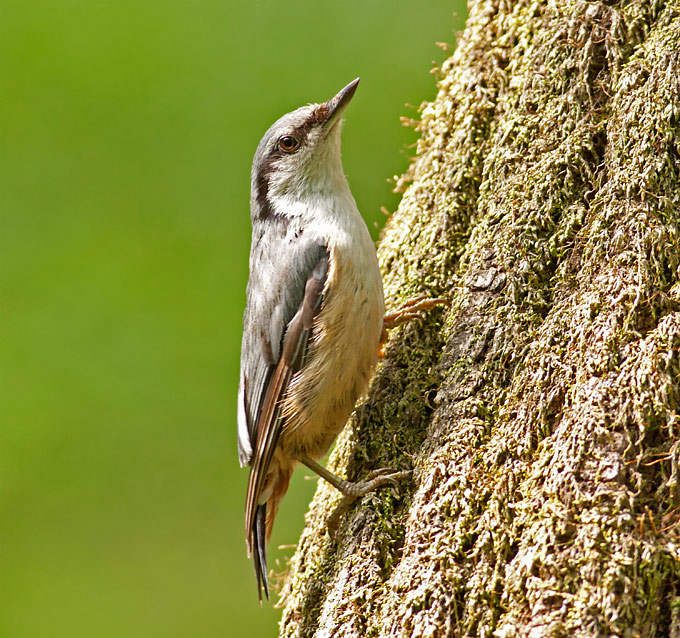
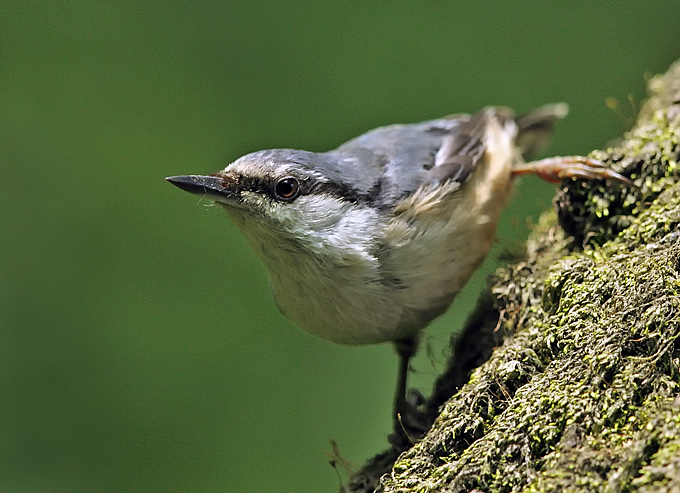
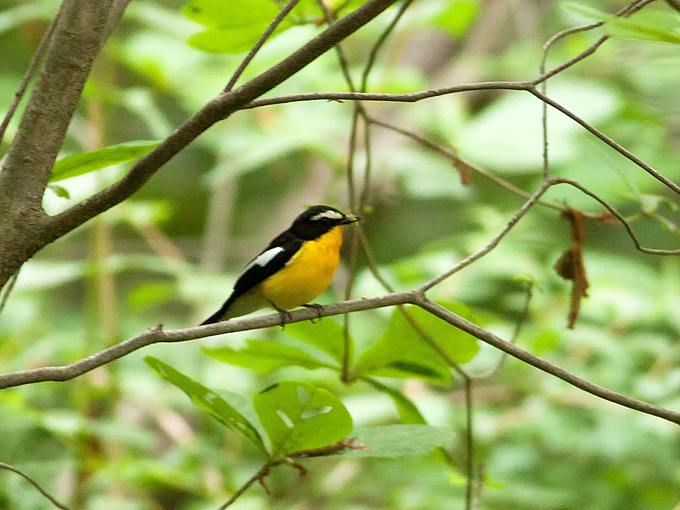
DaeIjak Island, June 4
In just an hour or so of very casual birding, only the resident/ summer breeding species in evidence with e.g. several Korean Bush Warbler, a Chinese Sparrowhawk, two Blue Rock Thrush, Black-naped Oriole, Common Pheasant, Brown-eared Bulbul, 7 Far Eastern Oystercatcher, Rufous Turtle Dove, Temminck's Cormorant, Eastern Great Tit, Korean Magpie, and abundant Black-tailed Gull.
Sunning itself on a forest path, a Tsushima Smooth Skink - a creature which I have also previously seen on Gageo and Socheong islands.
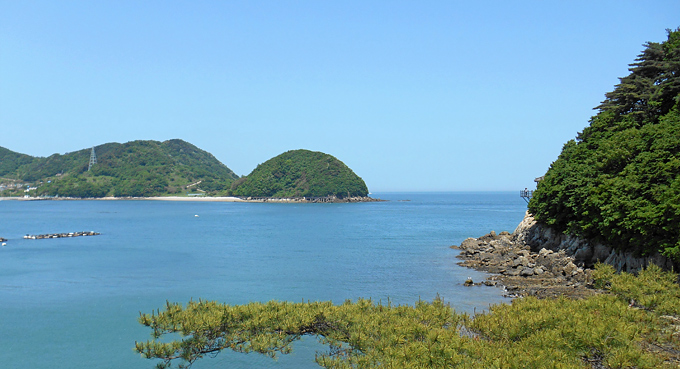
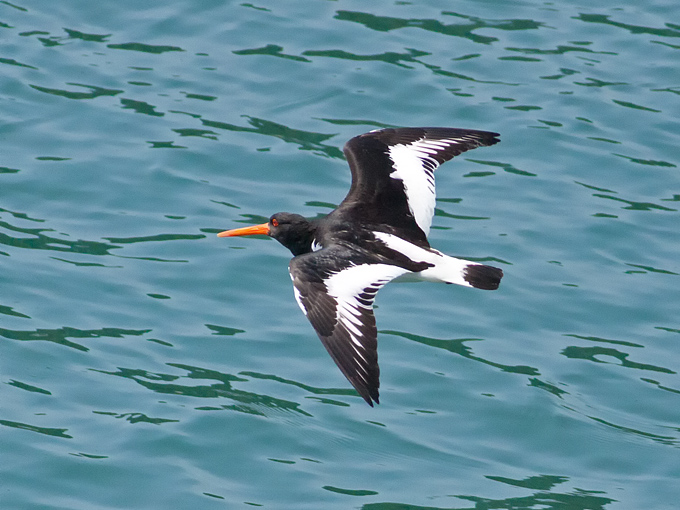
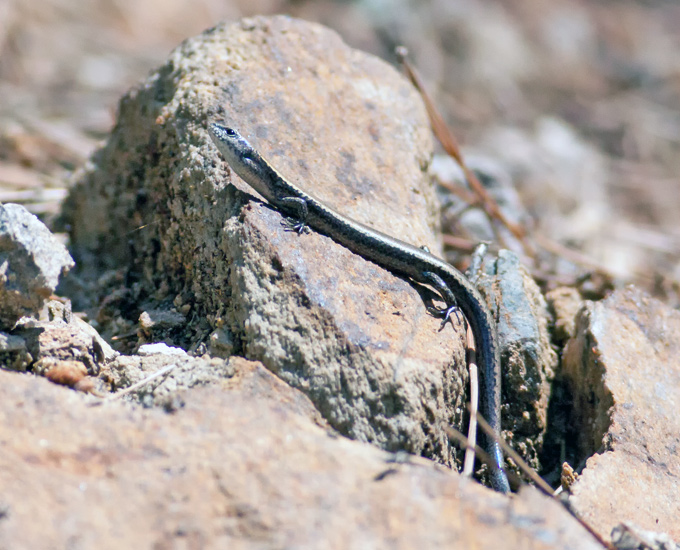
North Han River, June 4
Early morning (well ... 8:30am is not so early actually) at a popular tourist resort with Robin Newlin, who showed me the juvenile Northern Scops Owl. The fledgling was getting attention of all the birders and seemed rather curious about the Large-billed Crows, turning its head from time to time. Birds of note for the morning are in a separate report by RN. Slowly scanning the trees from the other species of owls spotted at the same spot previously, I also found a pair of Yellow-rumped Flycatchers, constantly on the move with insects in their beaks, indicating possible nesting sites close by. Also spotted a Great Spotted Woodpecker hopping thrush-like on the ground. I also heard distant calls of a Eurasian Cuckoo while walking on the trail right next to the river.
Later in the day, I also tried out a habitat a few miles away that seemed promising on the map. Next to another popular tourist spot (and a camping site), it didn't have many birds. Of note was the almost constant call of an Indian Cuckoo which remained invisible. There was a very vocal and visible Blue-and-White Flycatcher along with multiple Asian Stubtails, whose alarm calls echoed throughout the forest. Apart from that, there was an Eurasian Jay and a pair of very endearing Chipmunks.
North Han River, June 4
A morning trip to a popular resort area collared a juvenile Northern Scops Owl, Grey-headed and Great Spotted Woodpeckers, Black-naped Orioles, Great, Marsh, and Long-tailed Tits, an Eastern Crowned Warbler, Eurasian Nuthatches and several Dollarbirds.
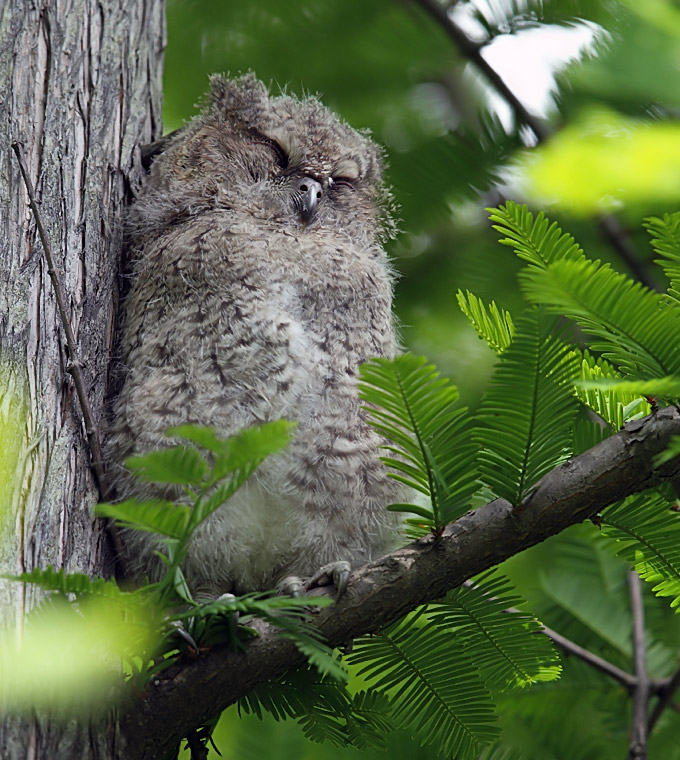
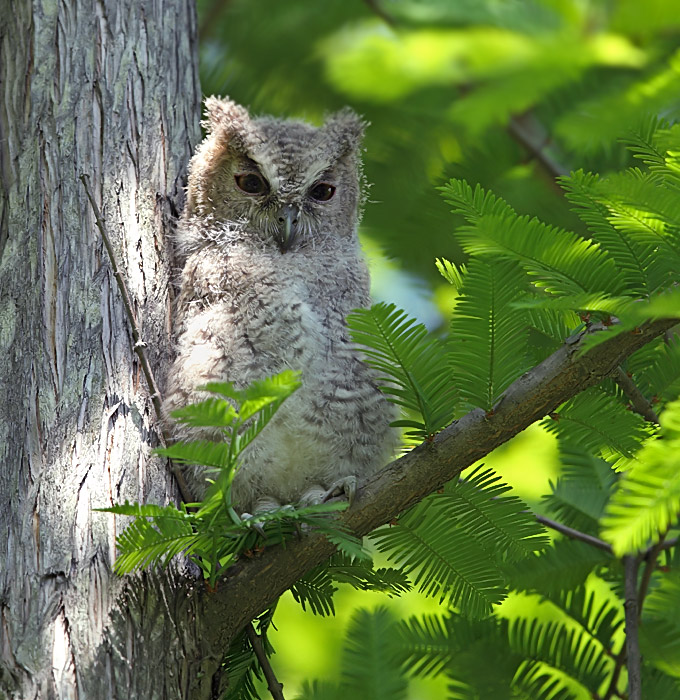
Seogwipo, Jeju, June 1
At a relatively undisturbed (yet) spot near town, three individual Fairy Pittas (or maybe two pairs) called from the treetops, mostly unseen. One of them had a strange three-note call , instead of the more familiar two-note call. Two Northern Boobook called from nearby, but remained frustratingly out of sight. It was hard to hear other birds at times over the manic refrain of the Common and Lesser Cuckoos. A pair each of secretive Yellow-rumped Flycatcher and Yellow-throated Bunting fed busily and appeared to be bringing food back to nests. Great, Long-tailed, and Varied Tits (including some interesting grey-bellied juveniles) were also seen, as well as a White-backed Woodpecker. At least three pairs of Japanese Paradise Flycatchers were active and vocal along the trail, giving some good views. Elsewhere around Seogwipo, I’ve found a further four pairs on different stream beds.
Back in town, a Striated Heron (perhaps the same individual that has been overwintering in this park) paced the bank of a stream in a park. Last week in the same park I saw a pair of Asian Brown Flycatchers that were acting like there was maybe a nest nearby.
Last night I heard a Fairy Pitta calling from the stream behind my apartment at about 2 a.m. It was heading north towards Halla Mountain. I heard a similar late-night phenomenon on June 6th of last year – is this stream a nocturnal highway for fresh-in Fairy Pittas?
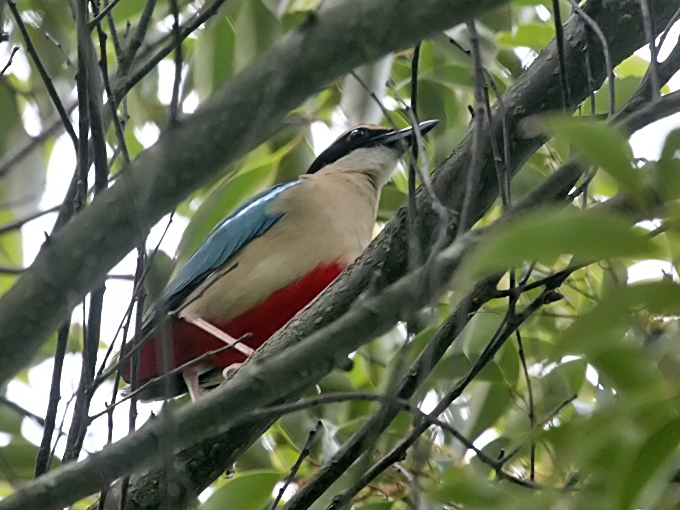
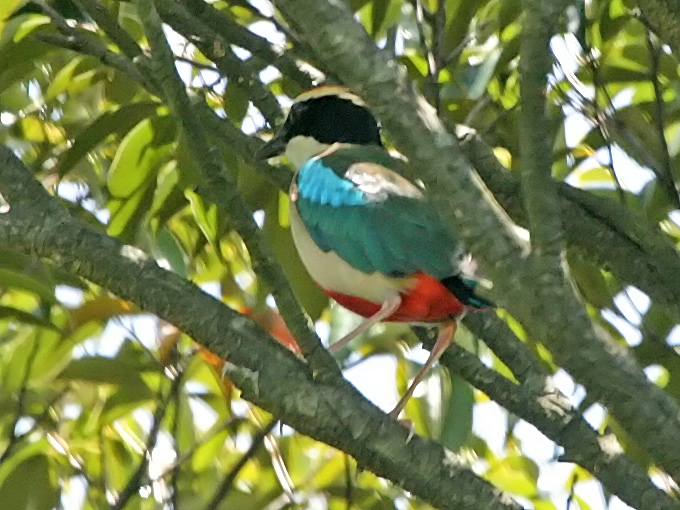
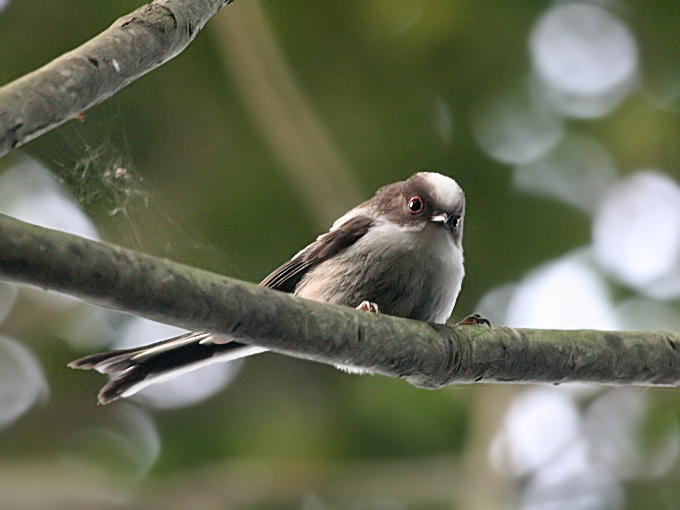
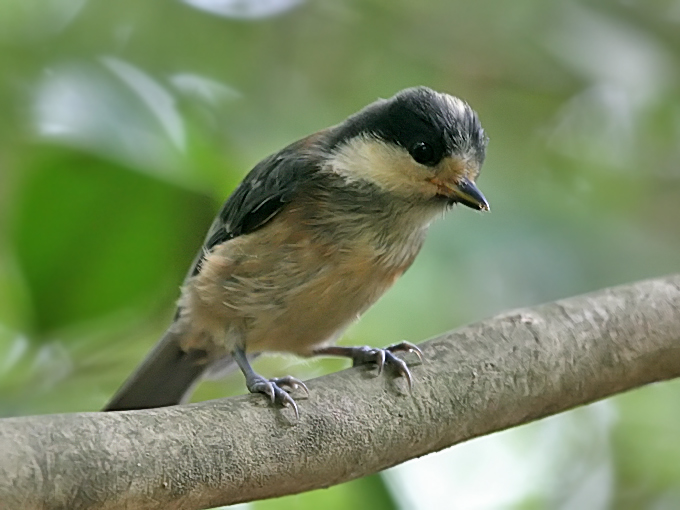
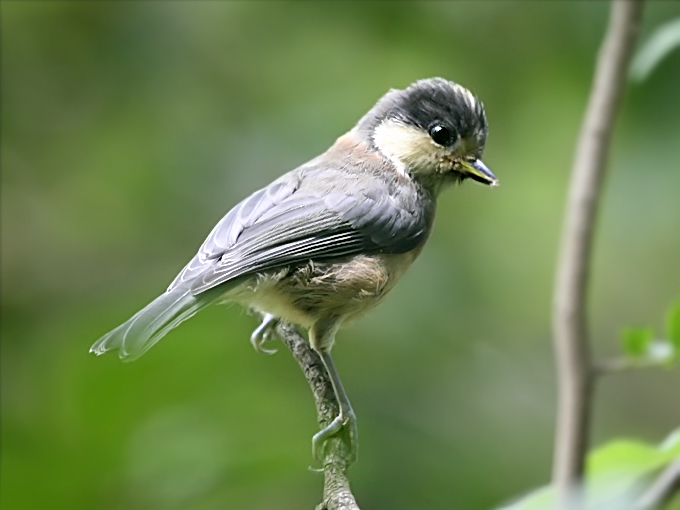
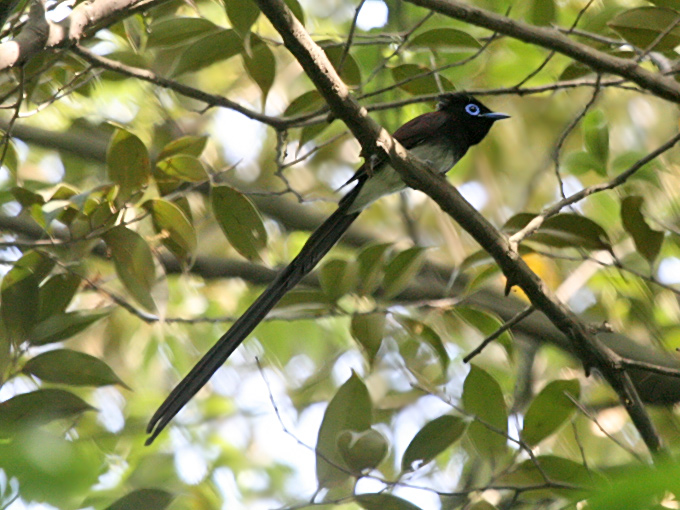
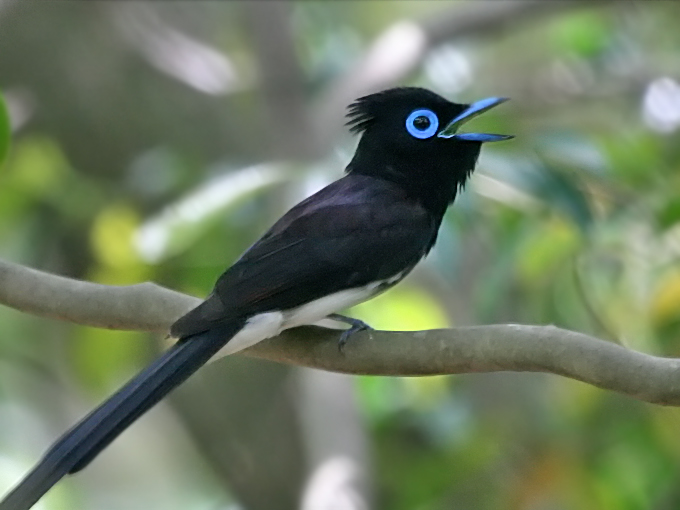
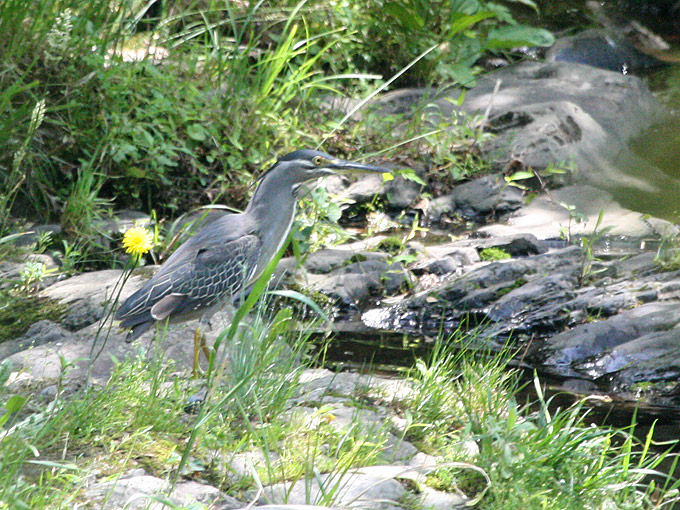
Birds Korea 1108 Ho, 3 Dong, Samick Tower Apt., 148-22, Namcheon-Dong, Su-Young-Gu
Busan, 618-762 Republic of Korea








